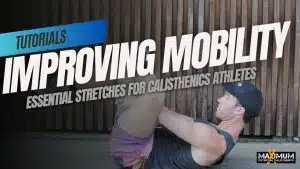Calisthenics has become a popular and effective form of training, focusing on functional movements, body control, and strength.
As more people embrace this discipline, many are considering it as a potential career path. Whether you’re passionate about working one-on-one with clients or leading group classes, the demand for skilled trainers in calisthenics is on the rise.
For those interested in developing their expertise, a solid educational foundation is essential. Fit Education, a leading provider of personal training courses, offers resources that can support your journey into the fitness industry.

The Growing Demand for Calisthenics Trainers
Over the last few years, calisthenics has seen an increase in popularity, not only as a fitness trend but also as a serious training method for both beginners and elite athletes.
Unlike traditional gym training that often requires heavy equipment, calisthenics uses body weight to build strength, agility, and endurance.
Because of this versatility and accessibility, calisthenics appeals to a wide demographic—from fitness enthusiasts who train outdoors to those looking for a functional training approach.
With more people recognising the benefits of calisthenics, the demand for qualified trainers who can guide clients through structured programs, such as a calisthenics gym training course, is rising.
As a specialist calisthenics trainer, you’ll not only help clients improve their overall fitness but also assist them in mastering advanced movements, improving their functional strength, and progressing through different levels of difficulty.
What It Takes to Become a Calisthenics Specialist
Becoming a calisthenics specialist trainer involves more than just mastering a few basic movements.
It requires a deep understanding of human anatomy, body mechanics, and the principles of progressive overload.
Whether you plan to offer in-person training or online coaching, having a strong educational foundation is critical.
That’s where certifications and courses come into play.
If you’re serious about becoming a calisthenics trainer, enrolling in a calisthenics personal training course can provide you with the formal education needed to design programs, correct client form, and ensure safety during workouts.
These courses often cover topics such as movement progression, strength development, and training clients of all skill levels.
In addition to formal education, practical experience is key. You’ll need to spend significant time honing your own skills, working through different training methods, and practising advanced movements like handstands, muscle-ups, and planches.
Clients look to specialist trainers for guidance on achieving these skills, so being able to demonstrate and teach them is vital.
Benefits of Becoming a Calisthenics Trainer
Diverse Clientele
As a calisthenics trainer, you’ll be able to work with a wide range of clients.
Some may come to you looking to build functional strength, while others may be interested in improving their athletic performance or achieving specific skills.
You’ll have the opportunity to train clients in various settings, from outdoor parks to gyms or even online.
Low Equipment, High Flexibility
One of the most appealing aspects of calisthenics training is that it requires minimal equipment.
As a trainer, this gives you flexibility in terms of where you conduct your sessions. You won’t be tied to a gym filled with machines.
Instead, your ‘gym’ can be a local park, a client’s backyard, or even their living room.
All you need is a space to move, a pull-up bar, and a few other simple pieces of equipment.
Career Growth Opportunities
The world of fitness is always evolving, and as a calisthenics trainer, you’ll be positioned to grow alongside it.
From hosting workshops and seminars to becoming a well-known influencer in the fitness community, your career has plenty of room for growth.
Additionally, you can explore further qualifications, such as specialisation in rehabilitation or mobility training, to expand your services.
Key Skills for Success as a Calisthenics Trainer
1. Mastery of Calisthenics Movements
Before you can teach others, you need to have mastered key calisthenics skills yourself.
Movements like push-ups, pull-ups, handstands, and muscle-ups should be second nature to you.
Not only will this make you a more effective trainer, but clients will be more likely to trust you as an expert.
2. Understanding Progressions
Calisthenics is unique in that progression is often more about skill and control than simply adding more weight.
Being able to guide clients through proper progressions—from beginner exercises like wall push-ups to advanced movements like the one-arm push-up—is essential.
This ensures clients improve safely and efficiently.
3. Communication and Motivation
As a trainer, your clients will look to you for guidance and motivation.
Knowing how to clearly communicate instructions, provide constructive feedback, and keep clients engaged is crucial.
Remember, each person is different, and tailoring your approach to individual needs will result in greater success for your clients.
4. Ongoing Education
The fitness industry is constantly evolving, and calisthenics is no different.
Staying up to date with new techniques, training methodologies, and trends is key to maintaining your relevance as a specialist trainer.
Consider pursuing additional qualifications, such as nutrition or sports science, to broaden your knowledge base.
Becoming a specialist calisthenics trainer is not only a rewarding career but also one that offers flexibility, diversity, and plenty of room for growth.
Whether you’re interested in working with beginners or elite athletes, the skills and knowledge you acquire along the way will enable you to make a meaningful impact on your clients’ lives.
With the right education, practical experience, and a clear business plan, you can turn your passion for calisthenics into a thriving career.
If you’re ready to take the next step in becoming a specialist trainer, check out the training courses available through Fit Education, your pathway to success.



